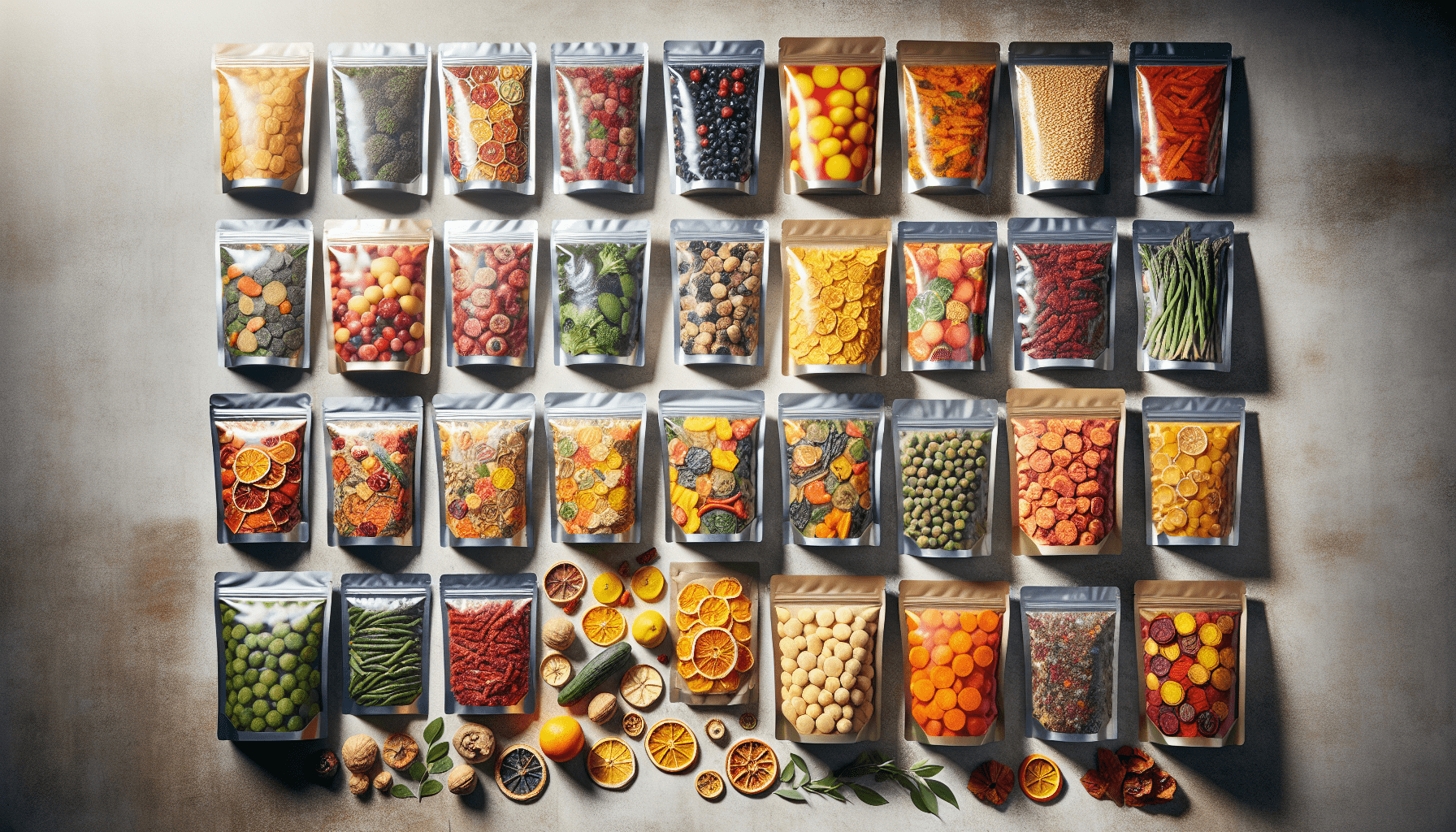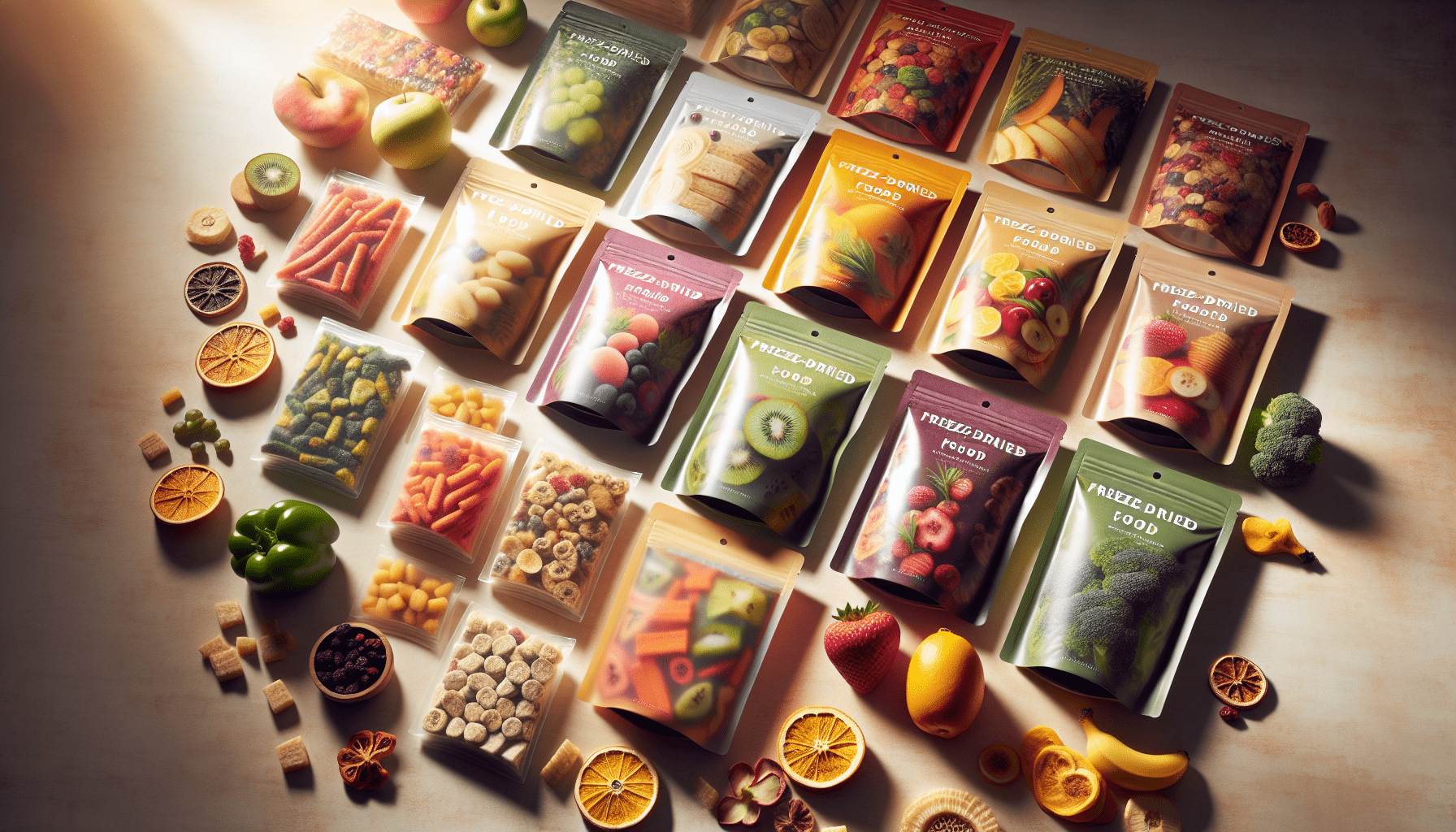Have you ever wondered what the best option for emergency food storage might be? It’s a question that’s more relevant now than ever, as unforeseen events like natural disasters, economic downturns, or even simple power outages highlight the necessity of being prepared. One possible solution that often comes up in discussions is freeze-dried food. But are freeze-dried foods a good option for emergency storage? Let’s take a friendly and thorough journey into exploring this topic.

What Are Freeze-dried Foods?
Freeze-dried foods undergo a specific preservation process where moisture is removed while preserving the item’s structure and nutritional content. Initially, the food is frozen, and then a process called sublimation is used to remove ice by transforming it directly into vapor, bypassing the liquid state. This method ensures that the texture, aroma, and most of the nutrients remain intact.
The Science Behind Freeze-Drying
Understanding how freeze-drying works can help you appreciate why it’s a popular choice for long-term storage. The process involves three main steps: freezing, primary drying (sublimation), and secondary drying (desorption). During primary drying, the pressure is lowered, and just enough heat is applied so the frozen water in the material sublimates. Secondary drying removes any unfrozen water molecules.
Benefits of Freeze-Drying
You might ask, why go through such a complicated process? Well, freeze-drying offers several advantages. It significantly reduces the weight of the food, making it lighter and easier to store. Additionally, because moisture is almost entirely removed, the shelf life of freeze-dried products is impressive – often decades long, when stored correctly.
Why Consider Emergency Food Storage?
Emergency food storage isn’t just for those planning for doomsday scenarios. It’s a practical measure for anyone interested in preparedness, whether you’re worrying about a sudden snowstorm, an unexpected financial hiccup, or even a global pandemic.
Importance of Preparedness
In a world where circumstances can change overnight, having a reliable food supply can offer peace of mind. Preparedness empowers you to face emergencies without the added stress of sourcing food under pressure. Knowing that you have sustenance at home allows you to focus on addressing other pressing concerns.
Common Concerns in Emergencies
During emergencies, access to fresh food can become limited or nonexistent. Power outages can spoil refrigerated goods, supply chains might break down, and grocery shelves could empty rapidly. Having an emergency food supply insulates you against these uncertainties, ensuring your family remains nourished and secure.
Advantages of Freeze-Dried Foods for Emergency Storage
Thinking of freeze-dried foods as a staple in your emergency pantry? There are several compelling reasons why they could be an advantageous choice.
Longevity and Shelf Life
One of the primary reasons to consider freeze-dried foods is their longevity. Most products can last 20 to 30 years without compromising taste or nutrition, provided they’re stored in a cool, dry place. This long shelf life surpasses that of canned and dehydrated foods, offering a dependable source of nutrients when fresh options are unavailable.
Nutritional Value
When compared to other preservation methods, freeze-drying retains a higher percentage of nutrients. The process doesn’t expose food to high temperatures as canning does, nor does it involve the oxidation that can occur in dehydration. This means that when you’re relying on freeze-dried foods, you’re consuming almost the same nutrients as you would from fresh produce.
Lightweight and Portability
If you ever need to relocate during an emergency, the weight of your food supply becomes crucial. Freeze-dried foods, being lighter than their original form, make transportation easy. This advantage extends beyond emergencies too—you can take them for camping trips or on long hikes without adding much weight to your backpack.
Variety and Taste
Freeze-drying can accommodate a wide range of foods, from fruits and vegetables to complete meals. You aren’t limited to just the basics. In addition, the process retains most flavors, offering meals with taste profiles very close to freshly cooked foods. This means, during an emergency, you won’t just be eating for sustenance but also enjoying satisfying flavors.
Potential Drawbacks of Freeze-Dried Foods
No food storage method is without its potential downsides. It’s crucial to weigh these against the benefits to make an informed decision.
Cost Considerations
While freeze-dried foods surpass many other preservation methods in performance, they can be significantly more expensive. Upfront costs might seem steep, especially if you’re aiming to stock a considerable supply. However, consider this an investment in peace of mind and long-term nutrition.
Water Dependency
A lesser-known fact about freeze-dried foods is their dependency on water for rehydration. In a situation where water is scarce, this could pose a problem. It’s essential to ensure you have a backup plan for safe, drinkable water to make the most of your freeze-dried reserves.
Texture Differences
Freeze-dried foods, while similar in taste to fresh foods, can differ in texture. For some, this might be an adjustment. For instance, rehydrated meats may not have the same juiciness you’d expect from fresh or canned options.

Comparing Freeze-Dried Foods with Other Storage Options
Understanding how freeze-dried foods measure up against other common storage methods can sharpen your decision.
| Feature | Freeze-Dried Foods | Canned Foods | Dehydrated Foods |
|---|---|---|---|
| Shelf Life | 20-30 years | 2-5 years | 1-15 years |
| Nutritional Retention | High | Moderate | Moderate |
| Weight | Light | Heavy | Moderate |
| Preparation | Water added, quick | Ready-to-eat, heat | Rehydration needed |
| Cost | Higher | Lower | Moderate |
Canned Foods
Canning is a familiar method of preservation that offers numerous benefits, including affordability and ease of use. Canned foods can be consumed directly, making them practical during power outages. However, their shorter shelf life and heavier weight might make them less ideal for long-term storage or transportation.
Dehydrated Foods
Dehydrated foods, similar to freeze-dried items, offer a lighter option. However, they experience more nutrient loss and typically have a shorter shelf life. They’re also reliant on water for full preparation. Dehydration might be an acceptable option for a moderate timeframe, but when planning for decades, freeze-drying offers superior longevity.
Tips for Effective Freeze-Dried Food Storage
Purchasing freeze-dried foods is just the start; proper storage is vital to fully capitalize on their benefits.
Optimal Storage Conditions
Freeze-dried foods should be kept in cool, dry, and dark environments to preserve quality. Ensuring a space that remains below 75°F (24°C) without excessive humidity is ideal. Higher temperatures can reduce shelf life considerably.
Packaging Options
Packaging plays a crucial role in maintaining the integrity of freeze-dried foods. Many products are available in robust Mylar bags with oxygen absorbers to extend life further. Bulk options in large cans are also available, perfect for stocking up lengthy reserves for families or groups.
Regular Rotation and Use
Although freeze-dried foods have long shelf lives, periodically rotating your stock is a good practice. Occasionally using these resources also familiarizes you with their preparation and taste, eliminating surprises during emergencies.

Making Freeze-Dried Foods Part of Daily Life
Consider integrating freeze-dried foods into your daily routine, not just for emergencies.
Convenience and Quick Meals
Freeze-dried options can serve as quick meals for busy days. They’re ready in minutes with the addition of hot water, offering a nutritional boost without cooking from scratch.
Supporting Healthy Lifestyles
With many freeze-dried fruits and vegetables maintaining their nutritional profiles, they can boost your daily intake of essential vitamins and minerals regularly. They’re perfect for snacks or as part of meals when fresh produce is unavailable.
Conclusion: Are Freeze-Dried Foods a Good Option?
So, are freeze-dried foods a good option for emergency storage? In a word: yes. Particularly for those looking to prepare for long terms, their extensive shelf life, lightweight nature, and capacity to retain nutrients and taste make them a compelling choice. While the initial investment may seem high, the security and reliability they offer during uncertain times can be invaluable.
It’s all about finding a balance that works for your specific situation. By integrating freeze-dried foods with other emergency preparedness measures, you can ensure comprehensive readiness. Being prepared is empowering and provides peace of mind, and adding freeze-dried foods to your storage plan might be just the right move for you.


